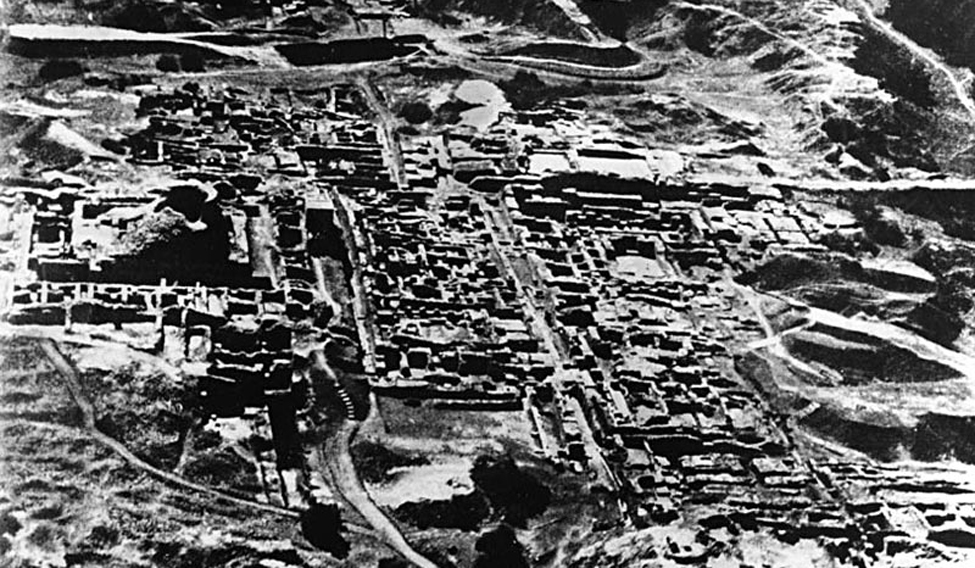Recent diggings at a Harappan site in Binjore in Shri Ganganagar district of Rajasthan have yielded yet another terracotta toy-cart, gold foil and ring, bull figurines, a seal with a unicorn figure, fish-hooks, arrowheads, knife, bangles, carnelian beads and a lot more. The artefacts are found to be from the early and mature Harappan periods. The early Harappan level has revealed vases, basins, jars and goblets. Lots of storage pots have been found placed over stand to store the food grains.
In a reply to a question in the Lok Sabha, Minister of State for Culture Dr. Mahesh Sharma said that the Archaeological Survey of India had undertaken six major diggings across the country in 2015-16. The Binjore excavation was one among them.
Digs at Rukministhan in Bihar's Nalanda district yielded votive stupas, brick walls, and shrine steps, dating back to Gupta and Pala periods. Among the artefacts unearthed were terracotta sealings, inscribed tablets, fragments of sculptures of Ganesh and Avalokiteshvara, beads, sling balls, etc. were found during excavation.
Another dig at Suabarei in Puri district of Odisha revealed Neolithic potsherds of a unique kind. Besides, a large number of charred animal bones having cut marks, charred tortoise cell, charred fish bones and pieces of mollusc cells and charred grains have also been found from the excavation.
Circular huts with post holes, series of hearths, floor levels, burning activities with ash and charcoal and flood deposits have also been found. Although no human burial was found, evidence of animal burial could indicate how the people of the time buried their favourite animals, said the minister.
"The excavation at Suabarei has proved that it was an important Neo-Chalcolithic site in between the Daya River and the Gangua rivulet. They were subsisted by hunting, gathering, fishing and farming as evident from the charred animal bones, fish bones, fish hook and charred grains. A single shark tooth found from the excavation suggests some sort of probable sea link. Presence of carnivorous canine teeth also indicates the hunting of wild animals etc," said the minister.
Excavation at Vadnagar in Mehsana district of Gujarat was a multidisciplinary one involving archaeology (geo and landscape archaeology), geo-informatics and sedimentology. More than 300 coins of various metals and alloys such as copper, lead, billon etc. of different periods have been found. Besides coin blanks, seal, weights stone beads, pendant, glass bangles, bone objects, terracotta figurines etc, have also been found.
"The entire process of study and analysis is to compose the several phases such as the digitisation of known geomorphological, geological and archaeological data from primary and secondary sources, creation of Digital Elevation Models (DEM) for the entire Mehsana district, creations of slope and aspects from resultant DEMs and employing complex algorithms and decisive models in ArcGIS," the minister informed the house.
Diggings at Keeladi in Madurai district of Tamil Nadu revealed early historic remains (c. 3rd BCE –3rd CE) in the form of brick structures. There were also Rouletted and Arretine pot sherds suggesting trade contacts maintained by this settlement with western world. These pot sherds are considered deluxe varieties and might have been reached here through traders.
At a later date these varieties were imitated and manufactured locally at the site. Another important find during the excavations are that of inscribed pot sherds having names of individuals written in Tamil –Brahmi script over them.
The site has also yielded glass, pearl and terracotta beads, terracotta figurines, grooved roof tiles, legged quern, antimony rods, spearhead, hop scotches, etc.
Excavations at Vangchhia in Mizoram yielded one of the biggest necropolis (Burials/related structures) sites in India.
The objects recovered from the excavations are in the custody of the ASI's field offices.
Excavations are normally conducted during the month of November-December to April-May depending upon the climate, after the recommendation of the Standing Committee of Central Advisory Board of Archaeology (SC of CABA).


